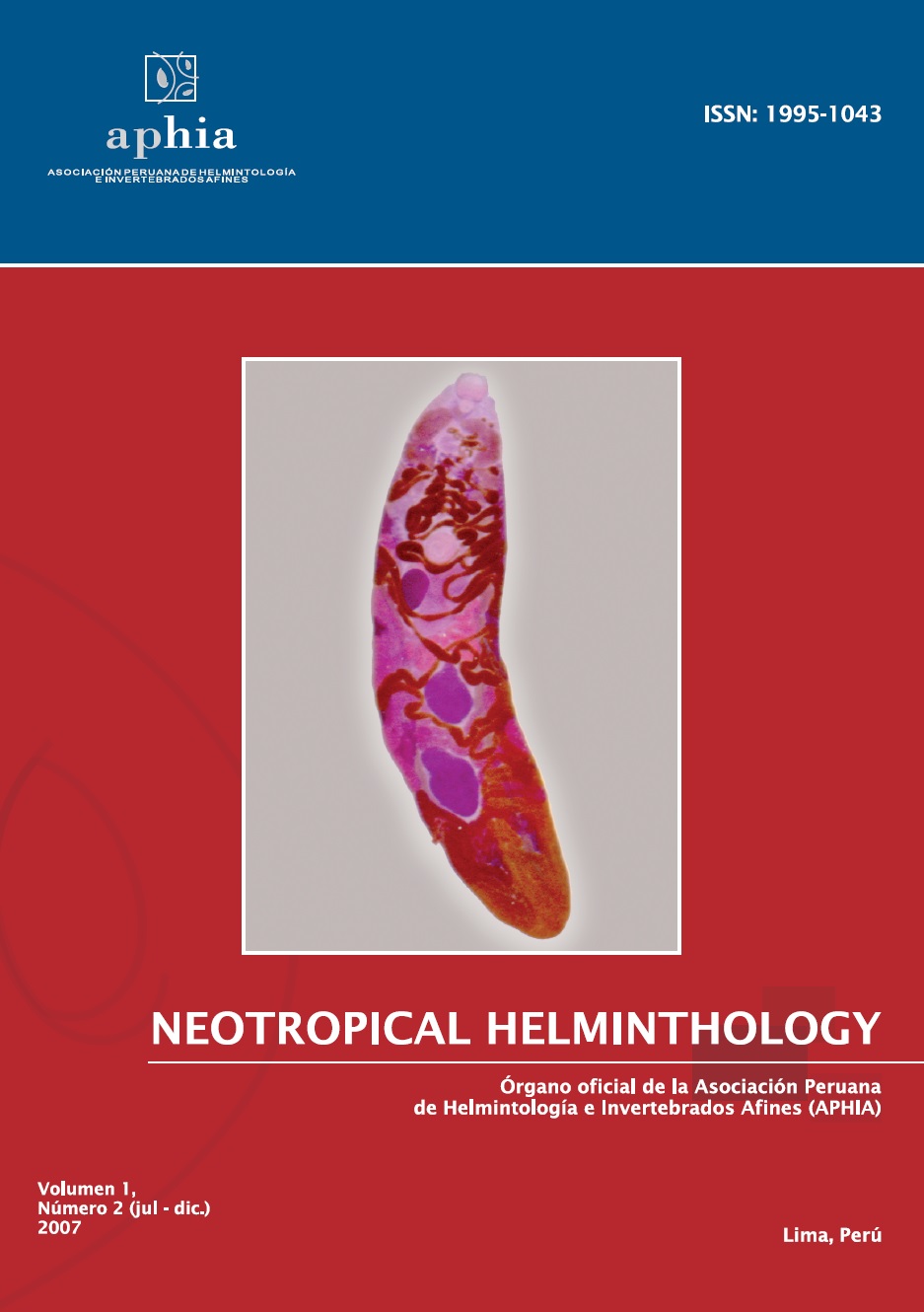UPDATE ON HUMAN FASCIOLIASIS IN PERU: DIAGNOSIS, TREATMENT AND CLINICAL CLASSIFICATION PROPOSAL
DOI:
https://doi.org/10.24039/rnh2007121156Keywords:
Fasciola hepatica, Fascioliasis/diagnosis, Fascioliasis/epidemiology, Zoonosis, Review, PeruAbstract
Human Fasciola hepatica infection in Peru is an emerging infectious disease. In this review we describe the fascioliasis situation in Peru, based on the most recent studies about epidemiology, diagnostic tools and treatment. We propose a new clinical classification according to the stage of the disease. Recent reports have highlighted the clinical variability ranging from an indolent to a severe life-threatening infection. Increasing numbers of human cases have been reported worldwide, especially from the Andean Region in South America. Most common clinical manifestations in the acute phase are: hepatomegaly, fever, weight loss, and eosinophilia. In the chronic phase, it can be mild and unspecific, including: biliary obstruction, bacterobilia, liver cystic calcifications, gallstones, and liver fibrosis. The Rapid Sedimentation Technique described by Lumbreras should be applied to diagnose the chronic phase as well as for epidemiological studies in endemic areas. The direct smear only detects 2% of cases. The novel diagnostic test Fas2 (cathepsin L1) ELISA has a sensitivity of 92.4% and specificity of 83.6% in 634 Peruvian subjects in endemic areas and it is helpful for both the acute and chronic phases. The most common radiological abnormalities in the acute phase are: track-like hypodense hepatic lesions, liver “abscesses” and/or subcapsular hematomas. Abdominal ultrasound has a low sensitivity in chronic cases and is not recommended for screening. Triclabendazole is the treatment of choice even with a single dose (cure rate ≥ 90 %) for both phases, but resistance is now a concern in animals. The new arsenal of available information can be applied to preventionand control programs in Peru.
Downloads
Published
How to Cite
Issue
Section
License

This work is licensed under a Creative Commons Attribution-NonCommercial-NoDerivatives 4.0 International License.
OBJETO: El AUTOR-CEDENTE transfiere de manera TOTAL Y SIN LIMITACIÓN alguna al CESIONARIO los derechos patrimoniales que le corresponden sobre la (s) obra(s) tituladas: xxxxxxxxxxxxxxxx, por el tiempo que establezca la ley internacional. En virtud de lo anterior, se entiende que el CESIONARIO adquiere el derecho de reproducción en todas sus modalidades, incluso para inclusión audiovisual; el derecho de transformación o adaptación, comunicación pública, traducción, distribución y, en general, cualquier tipo de explotación que de las obras se pueda realizar por cualquier medio conocido o por conocer en el territorio nacional o internacional.
REMUNERACIÓN: La cesión de los derechos patrimoniales de autor que mediante este contrato se hace será a título gratuito.
CONDICIONES Y LEGITIMIDAD DE LOS DERECHOS: El AUTOR-CEDENTE garantiza que es propietario integral de los derechos de explotación de la(s) obra(s) y en consecuencia garantiza que puede contratar y transferir los derechos aquí cedidos sin ningún tipo de limitación por no tener ningún tipo de gravamen, limitación o disposición. En todo caso, responderá por cualquier reclamo que en materia de derecho de autor se pueda presentar, exonerando de cualquier responsabilidad al CESIONARIO.
LICENCIA DE ACCESO ABIERTO: El AUTOR-CEDENTE autoriza que manuscrito publicado en La Revista Neotropical Helminthology permanece disponible para su consulta pública en el sitio web https://www.neotropicalhelminthology.com/ y en los diferentes sistemas de indexación y bases de datos en las que la revista tiene visibilidad, bajo la licencia Creative Commons, en la modalidad Reconocimiento-No comercial- Sin Trabajos derivados –aprobada en Perú, y por lo tanto son de acceso abierto. De ahí que los autores dan, sin derecho a retribución económica, a la Asociación Peruana de Helmintología e Invertebrados Afines (APHIA), los derechos de autor para la edición y reproducción a través de diferentes medios de difusión.


 Numero 2 Volumen 19 - 2025 (versión Anticipada)
Numero 2 Volumen 19 - 2025 (versión Anticipada)














































